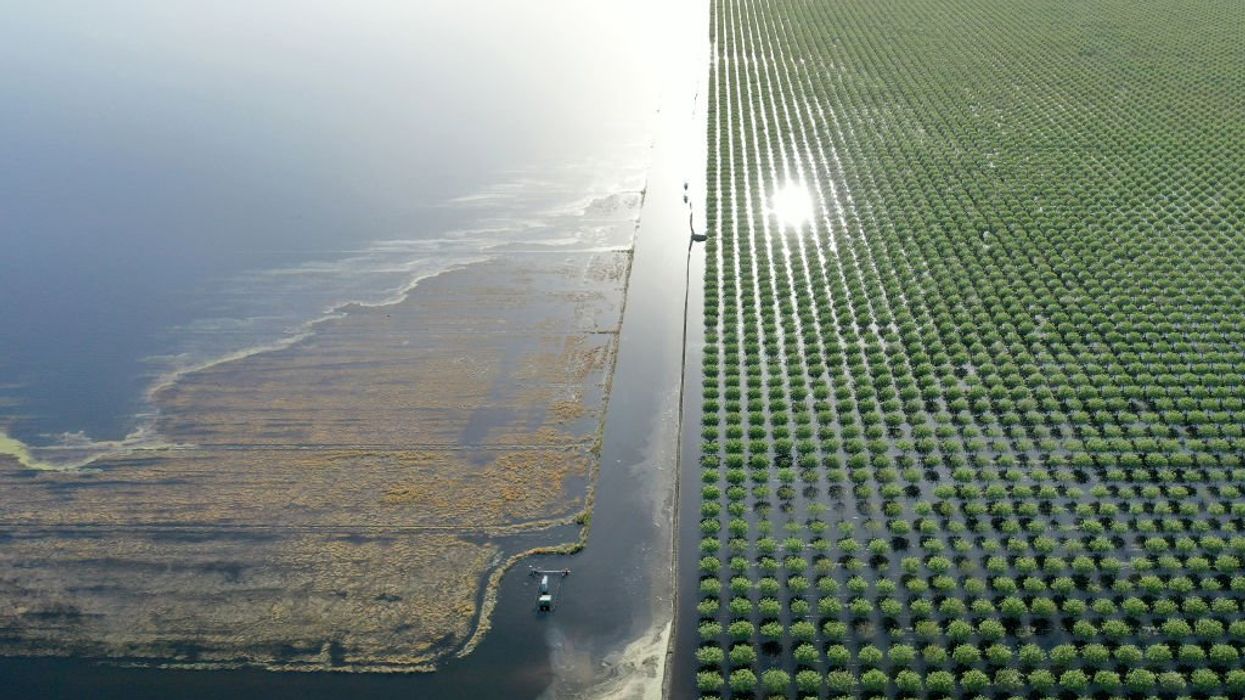Harriet Brewis
Apr 18, 2024

The once huge Lake Tulare fully disappeared in around 1890 but then returned in 2023
(Mario Tama/Getty Images)
Tulare Lake, located in California’s San Joaquin Valley, was once one of the largest bodies of freshwater in the whole of the US.
But, some 130 years ago it disappeared – thanks largely to the greed of colonialists, who drained its waters to create arable farmland.
And yet, last year, the once-cherished lake suddenly reemerged, bringing with it both positive and painful effects.
Back in the late 19th Century, Tulare stretched more than 100 miles long and 30 miles wide, and was “the largest body of freshwater west of the Mississippi River”, Vivian Underhill of Northeastern University explained in a news release.
At this time, it contained so much water that a steamship could carry “agricultural supplies from the Bakersfield area up to Fresno (at the heart of the San Joaquin Valley) and then up to San Francisco” — a distance of nearly 300 miles – she said.
However, in the succeeding decades, the “ancestral lakes” and connecting waterways that made such a route possible all but vanished thanks to manmade irrigation.
Named “Pa’ashi” by the indigenous Tachi Yokut tribe, Tulare Lake was fed primarily by snowmelt out of the Sierra Nevada mountains, as opposed to rainfall, which is scant in the region.
Fresno receives just over 10 inches of rain a year on average and sometimes as little as three, according to the National Weather Service.
Looking at the arid landscape of the San Joaquin Valley over the course of the 21st Century, it would have been hard to imagine such a large body of water dominating the landscape.
However, in the 1800s, “Fresno was a lakeside town,” Underhill said.

The researcher, who specialises in ethnography and environmental justice, explained that the lake first began disappearing in the late 1850s and early 1860s, thanks to “the state of California’s desire to take [historically indigenous] land and put it into private ownership.”
This process was called “reclamation” and often entailed “either draining inundated land or irrigating desert land to create arable farmland”, she said.
If “people could drain that land,” they would “be granted ownership of parts of that land. So there was a big incentive for white settlers to start doing that work,” she added, describing the process as a “deeply settler colonial project”.
The first time the lake fully disappeared was around 1890, when its “water essentially was [used to] irrigate all of the arid lands around that area,” she went on.
“Now the valley is crisscrossed by hundreds of irrigation canals, all of which were originally built to take that lake water and put it onto irrigated fields.”
And yet, in 2023, Tulare Lake came back from the dead.

“California just got inundated with snow in the winter and then rain in the spring,” Underhill explained.
“If you have a rain and snow event, the snow melts really fast,” and all of this still runs into the depression where Tulare Lake once sat.
Months after the lake’s resurgence, the impacts could be seen in the local wildlife.
“Birds of all kinds — pelicans, hawks, waterbirds” are returning, Underhill said, adding that “the Tachi also say that they’ve seen burrowing owls nesting around the shore,” a species described as “vulnerable or imperilled” by the U.S. Fish and Wildlife Service.
As well as the homecoming of different species – including fish and amphibians likely brought down by rainfall and flooding – human communities have been greatly affected by the lake’s rebirth.
For the Tachi Yokuts, “the return of the lake has been just an incredibly powerful and spiritual experience,” Underhill said.
“They’ve been holding ceremonies on the side of the lake. They’ve been able to practice their traditional hunting and fishing practices again.”

However, for the region’s farmworkers and landowners, the picture has been far less rosy.
Many of these agricultural workers have suffered devastating losses as a result of the flooding, with many losing their homes entirely.
Efforts are already underway to drain the lake once again, and Underhill said she expects it to remain in some form for about two more years — although new atmospheric river events over California this year could complicate this.
“Under climate change,” Underhill says, “floods of this magnitude or higher will happen with increasing frequency.”
“At a certain point, I think it would behove the state of California to realize that Tulare Lake wants to remain. And in fact, there’s a lot of economic benefit that could be gained from letting it remain.”
She also noted that last year’s resurrection wasn’t the lake’s first return since the 1800s.
“It happened in the ’80s, it happened once in the ’60s, a couple of times in the ’30s,” she said.
Looking at the wider environmental context, Underhill pointed out: “This landscape has always been one of lakes and wetlands, and our current irrigated agriculture is just a century-long blip in this larger geologic history.”
“This was not actually a flood. This is a lake returning.”

Nevertheless, in March this year, a reporter for the Guardian went to visit the iconic lake, and found herself met with “sprouts of grass and thick mud”.
Less than a year after its revival, Tulare Lake had shrunk to just 2,625 acres, according to the Kings county office of emergency services.
And officials now expect its “imminent disappearance”, Abraham Valencia, with the office of emergency services, told the news outlet. That is, “barring unforeseen snowmelt runoff causing upstream flooding.”
In other words, as Dani Anguiano wrote: “Despite the predictions, the lake is nearly gone.”
Sign up for our free Indy100 weekly newsletter
Have your say in our news democracy. Click the upvote icon at the top of the page to help raise this article through the indy100 rankings
Top 100
The Conversation (0)













